Coffee Variety | Origin and cultivation of rare Pink bourbon Pink Bourbon
The output of red bourbon, yellow bourbon, orange bourbon and pink bourbon is less, while that of pink bourbon is very little.
Pink bourbon is too rare to be known in the past.
Planting conditions of pink bourbon
Pink bourbon is a hybrid of yellow bourbon and red bourbon, with strong disease resistance and delicious taste. Compared with other varieties, beans have higher density, and its yield is very low. It is planted between 1500 and 2000 meters above sea level. But the process of cultivating pink bourbon is not an easy task. People need careful care during the whole growth period of coffee trees, and the planting environment is also higher. Another challenge is harvesting. It is difficult for workers to tell whether they are mature or not when harvesting. The main reason is that yellow genes and red genes of red bourbon are both recessive genes, which are easy to interfere with each other and make pink bourbon not easy to produce. In addition, pink bourbon is very similar to immature red bourbon. It is not easy to recognize and is often mixed together, which is why pink bourbon is rare.

The Origin of Pink bourbon
Pink bourbon was first planted by a coffee farmer named Gabriel Casta ñ o in Huilan. His farm is Finca La Granada, located in Acevedo, the second highest growing area in Columbia. it can reach 1800 meters above sea level, warm during the day and cool at night, providing an appropriate stressful environment for coffee trees. The farm covers an area of only 2 hectares, and Gabriel has 8000 pink bourbon plants. The rich flavor shown in the cup test has made the pink bourbon more and more famous.
At the beginning, it was mixed with other bourbon, Kaddura, and then picked and treated separately, and its cup performance is also very special, different from the general flat flavor of bourbon. Pink bourbon has fresh floral aromas, sweet fruit juices of blueberries and green grapes, cherry flavor in the middle and sweet taste like yellow sugar at the end, in terms of acidity. More show the performance of citrus berry compound.
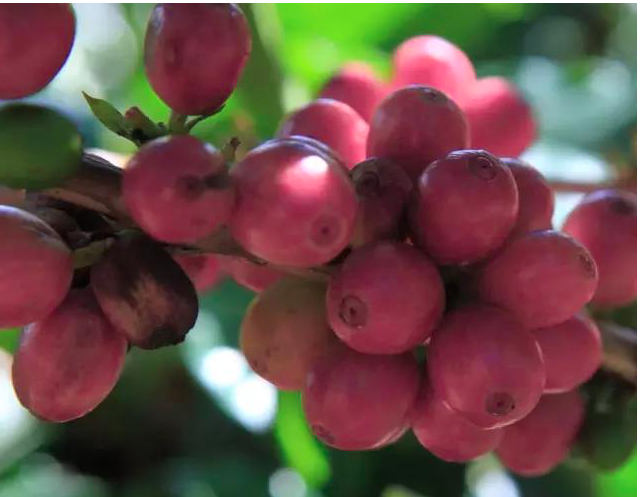
Pink bourbon, as its name implies, its coffee cherries are romantic pink when ripe. Is a very rare new variety, the reason why pink bourbon is rare, mainly because it is difficult to maintain this beautiful pink, sometimes harvest some orange bourbon, that is because the color of coffee fruit is ultimately determined by the recessive genes in pollen grains. Among the pollen grains we selected for hybridization, there are both yellow genes inclined to yellow bourbon and red genes inclined to red bourbon, and these are recessive genes, which are very easy to interfere with each other.
At present, pink bourbon can be seen in Colombia and Guatemala. Pink bourbon coffee has a multi-layered and rich flavor, bright acidity, round and thick taste; sweet orange, sweet sugar cane, pleasant juice and small tomatoes taste similar to Kenyan flavor.
Let's extend the spread of the well-known bourbon coffee.
Bourbon coffee was originally grown on the island of Reunion, which was also known as le Bourbon before 1789. Bourbon, the second species caused by the Typica mutation, is the oldest coffee variety in existence, and the green fruit appears bright red when it is ripe.
With the same old variety of coffee beans, unlike the tin card species, the leaves of the bourbon species are wider, the growth is denser, and the yield of coffee is higher than that of the tin card. Coffee bean particles are large in shape, uniform in size, uniform in color, and bright red when green fruits are ripe.
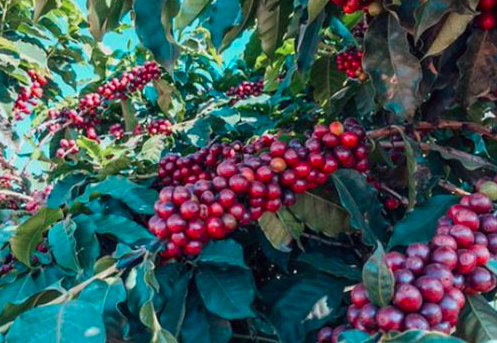
The output of bourbon coffee is nearly 30% higher than that of tin card, but the overall yield is still low among many coffee beans and is also vulnerable to rust leaf disease.
Bourbon is a coffee species belonging to a branch of Arabica species, generally bearing red fruit called red bourbon, in addition to yellow bourbon, orange bourbon, yellow bourbon relatively low yield, but better quality.
The propagation route of bourbon species
Introduced to Brazil in 1727 because of its low yield and easy to interfere with diseases, the bourbon species was introduced to Brazil around 1860 via Campinas in the south and rapidly expanded northward to other parts of South and Central America. In Latin America today, although most of the bourbon species have been basically replaced by their varieties (especially Caturra,Catuai and Mundo Novo, etc.), bourbon is still grown in El Salvador, Guatemala, Costa Rica, Peru and other countries.
In Africa, French missionaries known as Spiritan (from the Holy Spirit) played an important role in the spread of the bourbon species. The first church was founded in Reunion in 1841 and a branch was established in Zanzibar in 1859, while from Zanzibar a branch was established in Bagamoyo (Bagamoyo, coast of Tanzania, then known as Tanganyika) and St. Augustine (Kikuyu, Kenya) in 1862, and a branch was established in Bura (Taita Hills, Kenya) in 1893. The establishment of each chapter was accompanied by the planting of coffee seeds from Reunion.
Seedlings cultivated by Bura in 1899 were brought to another French church in Santa Cruz (near Nairobi), introduced to the Kilimanjaro region of Tanzania in 1900, and distributed seeds to local residents who were willing to grow coffee. This is the origin of the so-called "missionary bourbon". Then the Kent species was introduced in 1920. Therefore, up to now, the coffee in Tanzania is mainly bourbon and Kent.

-- French Territory Bourbon Island
-- pointed Bourbon to New Caledonia Yemen in 1860
-- 1732 round bourbon to the British dependency St. Helena Island.
-- round bourbon to Brazil in 1860.
-- round bourbon to Rwanda, Kenya, Tanzania in 1900
Sharp Bourbon to Colombia after 2000.
Bourbon variety
In the process of reproduction, many new varieties are produced due to various factors, such as natural mutation (natural mutation), intraspecific mating, artificial breeding, etc., such as Kaddura, Catuai, Pacas, yellow bourbon, sharp bourbon, SL28, SL34 and other long lists.

Two kinds of common bourbon (red bourbon and yellow bourbon)
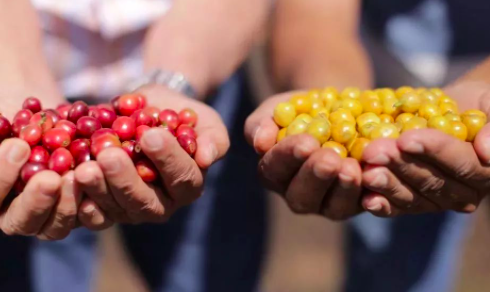
Red bourbon
As early as 1850, Brazil became the world's leading producer of coffee. They relied heavily on the tin card introduced in 1720, but the yield of the beans was low. In order to ensure profits, they introduced bourbon, that is, red bourbon, from Reunion, and planted it on a large scale.
After the red bourbon coffee tree blossoms and bears fruit, the color change of coffee fruit is from green > to yellowish > to light orange > to ripe red > to ripe dark red, which is what we call bourbon species. Planted in bourbon at high altitude, it usually has a better aroma and bright acidity, and even tastes like red wine.
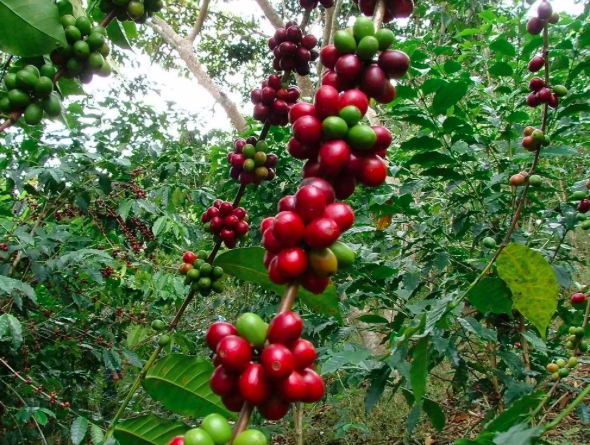
Yellow bourbon
Yellow bourbon is a unique bourbon variety in the state of Sao Paulo, Brazil. the fruit of coffee does not turn red after ripening, but orange, so it is called "yellow bourbon". Because of its low yield and relatively intolerant to wind and rain, it has not been widely planted. The yellow bourbon planted at high altitude will have a great flavor.
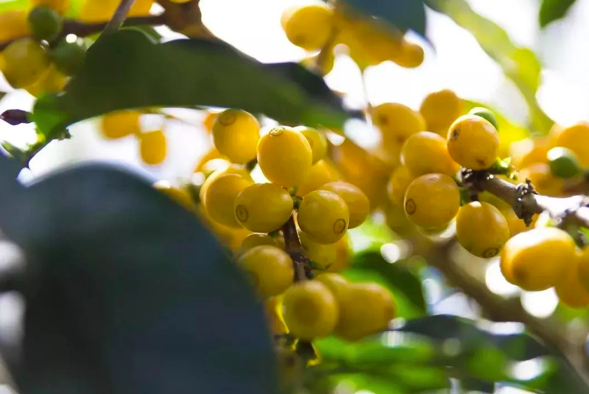
Taste characteristics: sweet and smooth fruit sweetness, obvious nutty flavor, balanced and supple acidity, weak and clean bitterness, rich chocolate aroma and nutty flavor, bright and fresh taste.
So how do you flush pink bourbon by hand?
V60 hand flushing parameters
Degree of grinding: medium fine grinding
Water temperature: 90 degrees
Powder weight: 15g
Powder / water ratio: 1:15
Total cooking time: 2 minutes
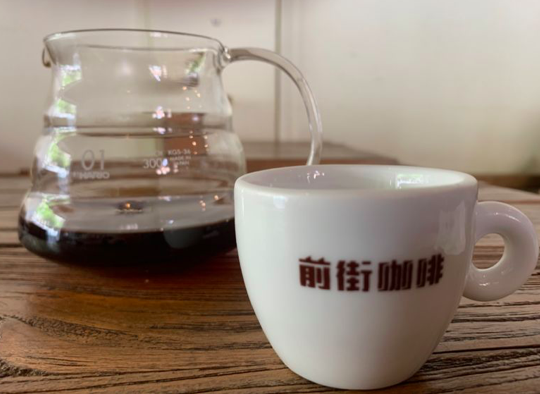
Specific manual cooking techniques:
Steaming: 30 grams of water, 34 seconds
The first stage of water injection: slowly circle water injection 90 grams, to 120 grams reading stop, wait for the liquid level to drop to the powder layer surface.
The second stage of water injection: increase the amount of water around the circle, inject 105 grams of water, stop the reading to 225 grams, wait for the powder layer to be exposed, remove the filter cup.
Flavor performance: fresh flower aroma, distinct layers, obvious aroma of citrus and small tomato, soft acidity after the temperature drop, sweet taste of caramel at the end, smooth and clean taste
Important Notice :
前街咖啡 FrontStreet Coffee has moved to new addredd:
FrontStreet Coffee Address: 315,Donghua East Road,GuangZhou
Tel:020 38364473
- Prev

When beginners start to practice drawing flowers, they always have difficult and complicated problems in their hearts.
As soon as I entered the flower, I thought that I didn't know how many stupid things I had done in order to pull the flower. I watched the video and studied the skill of drawing flowers. I was infatuated with it. Every day, I poured milk, foamed, injected exercises, practiced water, practiced fusion, and pushed patterns in order to pull out a good-looking pattern. Every day, I was like a shen jing friend (bing).
- Next
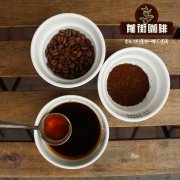
Ecuador Coffee Ecuador Excellence Cup Ecuador first Coffee Excellence Cup
Professional coffee knowledge exchange more coffee bean information please follow the coffee workshop (Wechat official account cafe_style) Coffee Excellence Cup will be held in Ecuador, this is the first time in the 20-year history of the event. The CoE Cup competition and auction will be held for the first time in Ecuador, a country widely considered by coffee buyers to be in the arabica specialty coffee market.
Related
- A complete list of coffee bean names and their meanings! What is Yejia Shefi coffee? Where is Mantelin coffee?
- What grade does Arida Manor Kaduai coffee beans belong to? What treatment is Arida ASD slow anaerobic sun exposure?
- The milk tea cup becomes smaller?! Overlord Tea Girl launches a new "Return to Yunnan" series
- Accused of selling counterfeit and high-priced coffee beans! Well-known boutique coffee brand "Oukelao" bowed and apologized!
- How to make espresso dumplings? Can I eat coffee and glutinous rice balls together?
- Save the unformed and stagnant powder cakes in one second! What is the problem with stagnant water in the powder bowl of the espresso machine?
- What does hand-brewed coffee stop mean? Why is it not recommended to make coffee by hand?
- Is it normal to smell like coffee? Why does coffee smell like alcohol? What's wrong with the strong smell of cold extract ice dripping ice brewed coffee?
- How to solve the problem that hand-brewed coffee extraction takes too long? Why is the water flowing so slowly when making coffee?
- The main points of making Australian white coffee, the proportion details, how does Australian white properly foam and blend the flowers?

